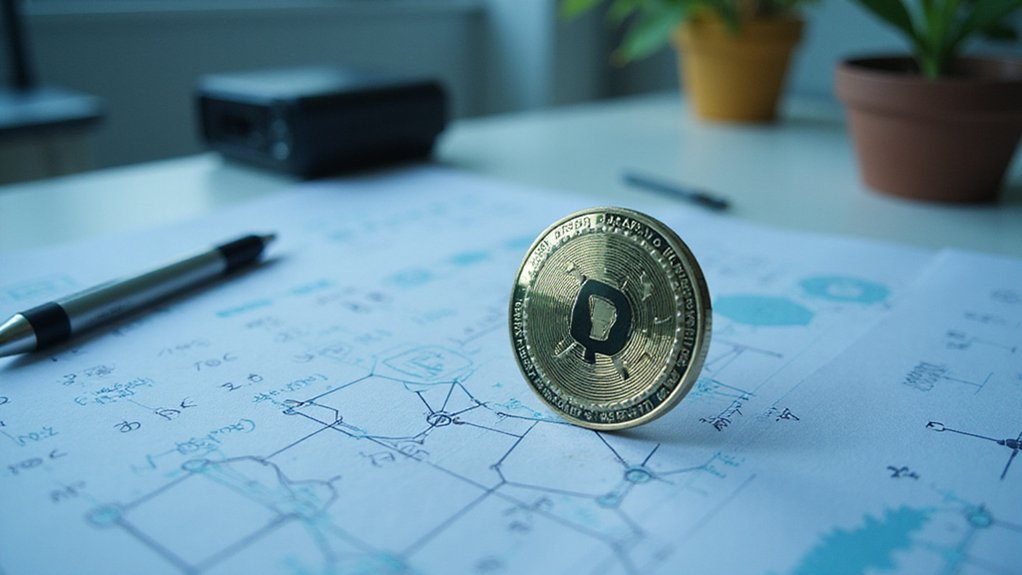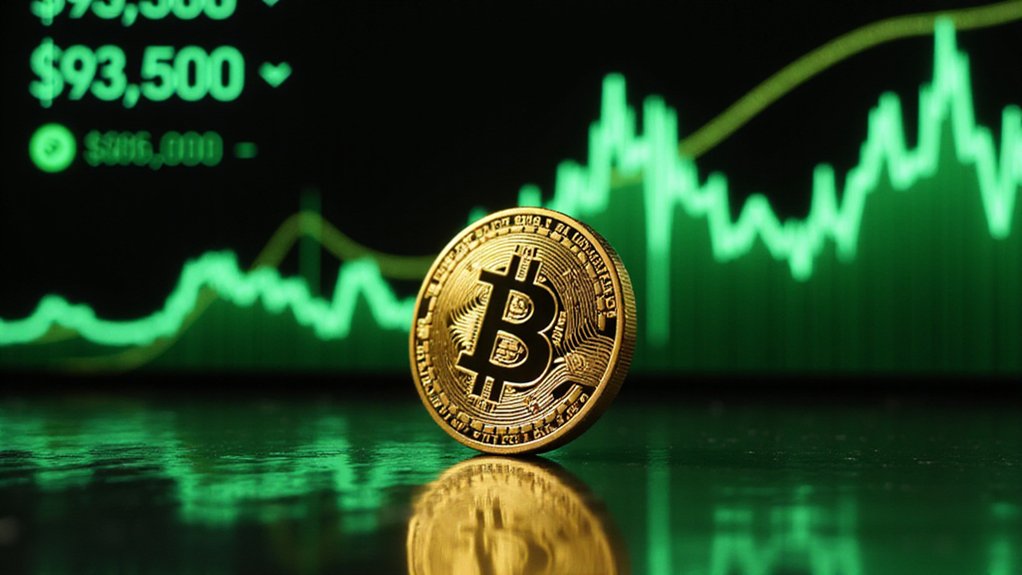ADA is the native cryptocurrency of Cardano, a third-generation blockchain platform launched in 2017 by Charles Hoskinson and Jeremy Wood. Operating on the energy-efficient Ouroboros proof-of-stake protocol, ADA enables holders to participate in network validation through staking while supporting diverse applications from DeFi to identity management. With a capped supply of 31.1 billion tokens and a research-driven development approach featuring peer review, Cardano positions itself beyond mere speculation for the financially underserved. The platform’s phased roadmap promises increasing utility.

ADA, the native cryptocurrency powering the Cardano blockchain, stands as a testimony to the evolution of distributed ledger technology in an increasingly crowded digital asset landscape. Launched in 2017 by Charles Hoskinson (an Ethereum co-founder, one might note) and Jeremy Wood, Cardano positions itself as a third-generation blockchain platform—distinguishing itself from predecessors through its research-driven approach and scientific philosophy that, commendably, prioritizes peer review over the rush-to-market ethos pervasive in crypto circles.
The token’s economics reflect careful consideration of long-term sustainability. Of the initial 31.1 billion ADA supply, 25.9 billion entered circulation through public sale, while the remainder was allocated to the troika of organizations steering Cardano’s development: Input Output Global, Emurgo, and the Cardano Foundation. This distribution structure—unlike certain projects where founders mysteriously retain controlling interests—aims to balance network security with participatory incentives. ADA’s name draws inspiration from Ada Lovelace, the 19th-century mathematician recognized as the first computer programmer.
At Cardano’s technical core lies Ouroboros, a Proof-of-Stake consensus protocol that renders Bitcoin’s energy-intensive mining paradigm rather antiquated. ADA holders can delegate tokens to staking pools, contributing to transaction validation while earning rewards—all without the environmental footprint that has made certain cryptocurrencies increasingly indefensible in climate-conscious discourse. The platform’s annual energy consumption is estimated at merely 6 GWh, representing less than 0.01% of Bitcoin’s massive power requirements.
The platform’s multi-phase roadmap encompasses smart contract functionality, scalability enhancements, and—perhaps most ambitiously—a governance system where ADA holders will determine protocol changes through stake-based voting. The current Basho era focuses on optimization, while the forthcoming Voltaire era promises to deliver true decentralized governance.
Beyond mere speculation (the unfortunate primary use case for many cryptocurrencies), ADA facilitates diverse applications including DeFi protocols, identity management solutions, and financial services targeting the global unbanked population. The platform’s planned Ethereum compatibility further expands its utility, allowing developers to deploy Solidity contracts within Cardano’s ecosystem.
As blockchain technology matures, Cardano’s methodical development approach positions ADA as a potentially significant player in the inevitable rationalization of the cryptocurrency market—where substance may eventually triumph over speculation.
Frequently Asked Questions
How Does Ada’s Sustainability Compare to Other Cryptocurrencies?
Ada’s sustainability credentials eclipse most competitors in the cryptocurrency ecosystem.
Unlike Bitcoin’s notorious energy-guzzling proof-of-work system, Cardano’s peer-reviewed Ouroboros protocol employs proof-of-stake validation, reducing energy consumption by orders of magnitude.
Its MiCA-compliant sustainability reporting and partnerships with renewable energy providers further cement its eco-friendly status.
While several cryptocurrencies now pivot toward greener consensus mechanisms, Cardano’s early adoption of sustainability principles positions it as the benchmark for environmentally responsible blockchain operations in an increasingly carbon-conscious market.
Can I Stake Ada Without Technical Knowledge?
Staking ADA requires minimal technical acumen—a welcome departure from many crypto protocols’ Byzantine complexity.
Users simply need a compatible wallet (Daedalus or Yoroi being the standard-bearers) and basic transaction knowledge.
The delegation process follows an almost disappointingly straightforward path: select a stake pool, delegate tokens, and await rewards.
The technical heavy lifting falls squarely on pool operators’ shoulders, while neophytes can participate in network consensus—and reap passive income—with little more than a few intuitive clicks.
What Risks Are Associated With Investing in Ada?
Investing in ADA entails a constellation of risks that prudent investors should consider.
Regulatory uncertainty looms large, with the SEC’s classification as a potential security creating legal exposure.
Market volatility remains pronounced, with technical indicators suggesting vulnerability to significant downside.
Competitive pressures from Ethereum and others threaten market share, while development delays could erode confidence.
Finally, quantum computing advances pose long-term cryptographic challenges that, while not imminent, merit consideration in risk assessment frameworks.
How Do Ada Transaction Fees Compare to Bitcoin?
Ada transaction fees stand in stark contrast to Bitcoin’s often exorbitant costs.
While Bitcoin fees fluctuate dramatically—sometimes reaching $50+ during congestion—Ada maintains consistently low fees (typically fractions of a cent) thanks to its Proof-of-Stake mechanism.
Cardano’s fee structure combines fixed and variable components based on transaction size, enabling microtransactions that would be economically unfeasible on Bitcoin.
This fundamental difference reflects Cardano’s design philosophy: sustainable scalability versus Bitcoin’s increasingly prohibitive fee market during high-demand periods.
Is Ada More Resistant to Market Volatility Than Other Cryptocurrencies?
ADA demonstrates relative stability compared to many altcoins, but calling it “more resistant” to volatility stretches credulity.
With a 7.5% price volatility and alignment with Bitcoin’s movements, Cardano exhibits typical crypto market behavior.
Its RSI of 52 suggests neutrality, while the Fear & Greed Index at 30 reveals market-wide apprehension.
ADA’s technical indicators and $700M in deployed leverage point to resilience, though it remains susceptible to the same macro forces affecting the broader cryptocurrency ecosystem.









